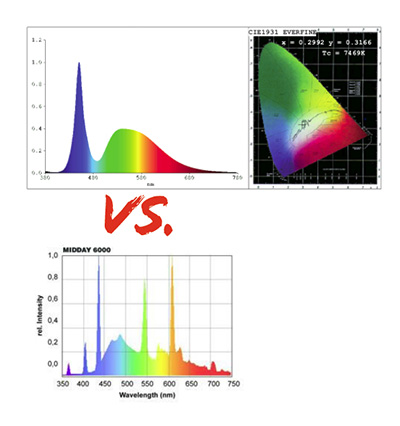Oh boy, you just opened up a can of worms and you got me going! LOL
I'm not an expert, but when I researched it last, I do recall reading that plants can utilize all those colors in the wavelength. Although, the green much less than the blue and red. Blue can penetrate the deepest, where red gets filtered out the fastest by water. That's one reason the dedicated red LEDs that are supplemented are a welcomed addition in my book.
I just find you'll get the best results from plant growth by giving them "full spectrum" lighting. That's why you'll find some naysayers to LEDs when they first got released for planted tanks... they just weren't impressed and would say stuff like it just didn't make their plants look their best, this technology is still in its infancy stage, or it didn't develop colors well (i.e. red plants fading to green); and they'd switch back to T5HO. If you were to examine all white LEDs and look at a spectral graph for them, you'd be surprised how disproportionately heavy they are in the blue spectrum. Whereas, if you compared a similar color temperature bulb from a T5HO florescent tube, you'll see (on the spectral graph) spikes in reds and greens (both have the blue). Here's an example comparing two daylight lights (7,000K and 6500K, respectively), first being LED and the second a midday T5HO bulb:

For this reason, I like the direction of where the newer freshwater LED technologies are taking us. We're seeing manufacturers, like BML, Current, Aqueon, Finnex, Fluval, etc., start using and incorporating specific LEDs that emit other bandwidths (colors) other than just white -- ultimately bringing us closer to "full spectrum."
Here's more to read
 http://www.aquaticplantcentral.com/forumapc/lighting/38014-lighting-spectrum-photosythesis.html
http://www.aquaticplantcentral.com/forumapc/lighting/38014-lighting-spectrum-photosythesis.html

